Traveling with your pets from the United States to Canada is easy! Learn everything you’ll need to know for a pet friendly road trip across the border.
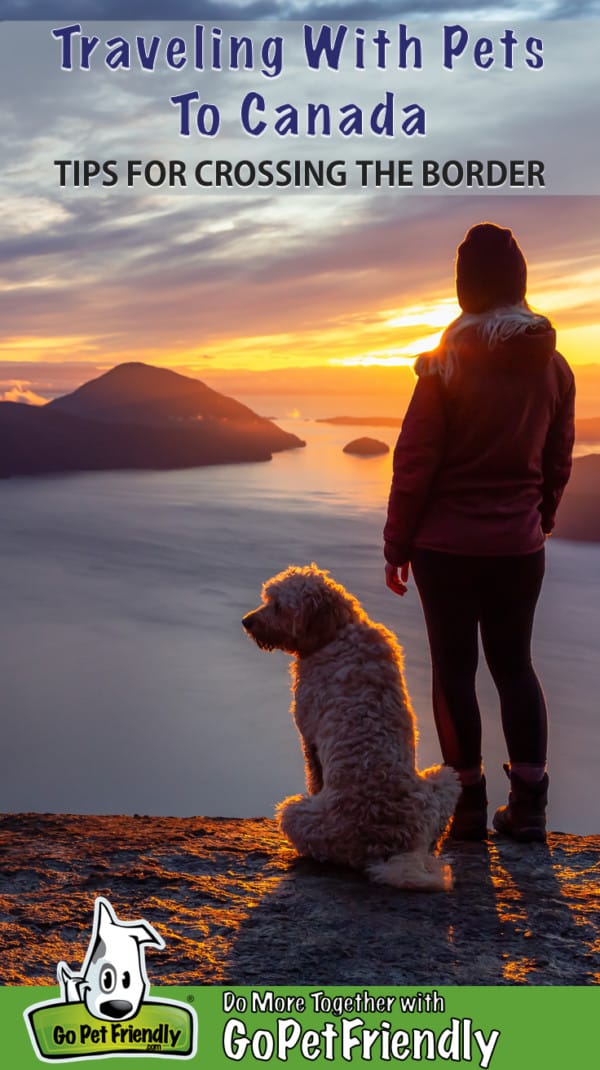
The idea of traveling with your pets to Canada might make you nervous. But there’s really no need to worry! We’ve traveled across the border with our dogs many times over the years, and we’re happy to share the tricks we’ve learned.
Traveling To Canada With Pets For Commercial Reasons
Please note that this article is for people traveling with their pets for personal reasons, like a vacation or to visit friends and family. If your trip to Canada is for pet breeding, sale, or adoption purposes, refer to the rules regarding the commercial transportation of animals.
If you’re planning to travel to or through Ontario with a bully breed, please pay special attention to the “Breed Specific Legislation” section of this post.
Documents People Need To Travel Between The U.S. And Canada By Car
Most U.S. citizens can visit Canada for up to six months, as long as the right paperwork is presented at the border. When entering Canada or returning the the U.S., all travelers must provide acceptable identification and proof of citizenship. A passport is recommended because it proves both citizenship and identification.
Those who meet certain requirements can apply for Trusted Traveler Programs. Acceptance into these programs allows members to use expedited lanes at the U.S. airports and when crossing international borders. In addition, these additional forms of identification may also be acceptable:
- U.S. Passport Cards
- Enhanced Driver’s Licenses
- Trusted Traveler Cards (Global Entry*, NEXUS, SENTRI, or FAST)
- Military Identification Cards (for members of the U.S. armed forces on official orders)
- U.S. Merchant Mariner Document (for U.S. citizens on official maritime business)
Those traveling for work, school, or who are planning to move permanently will likely need a Canadian visa.
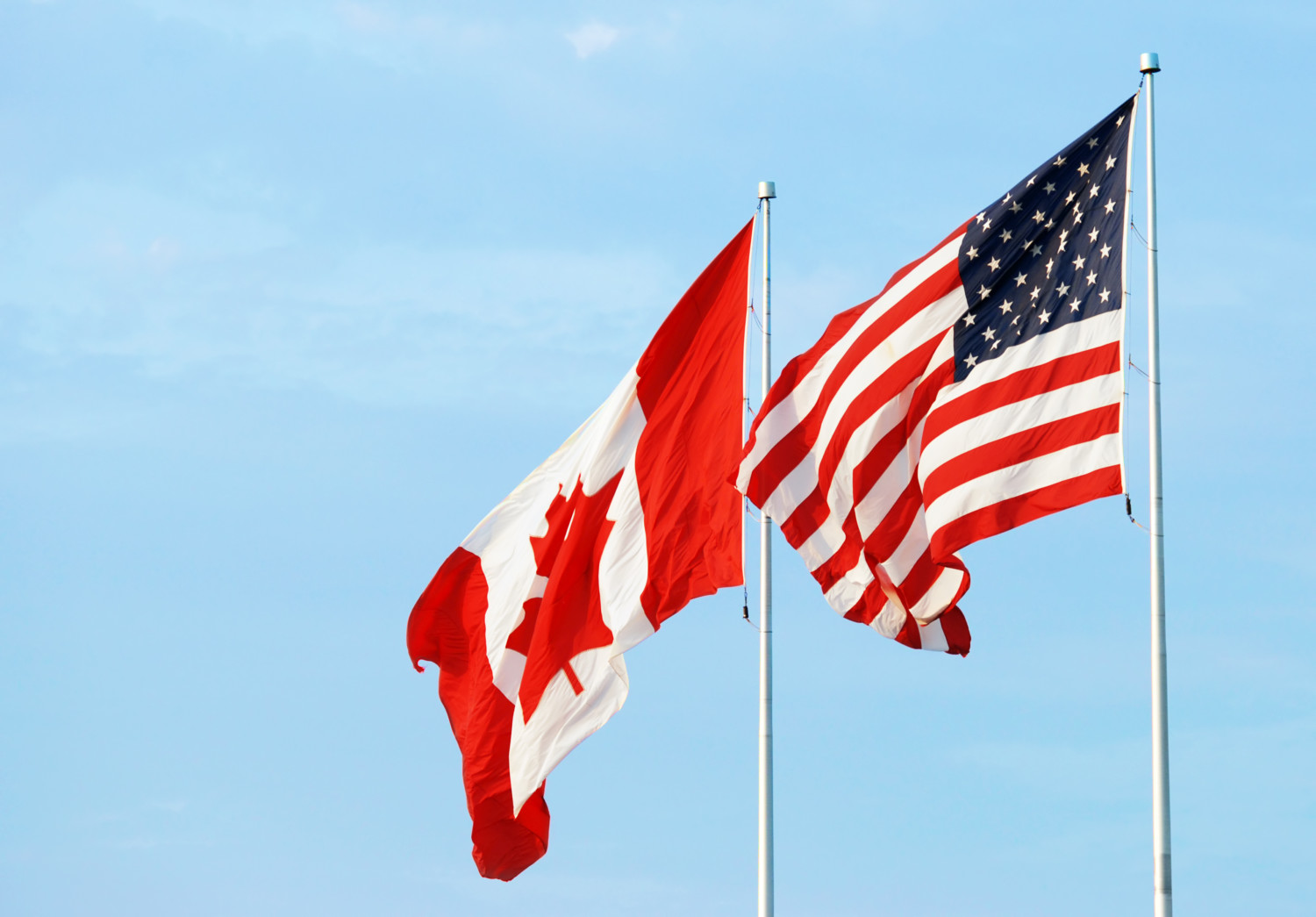
Traveling With Children
All minors entering Canada and returning to the U.S. must present evidence of citizenship, such as a passport or passport card at the border. Children younger than 16 who are traveling with both parents by land (not flying) can use their government-issued birth certificate as identification.
If you’re traveling with a child for whom you share custody, or you’re not the child’s parent or legal guardian, additional documents will be needed. You can learn more about those requirements on the US Customs and Border Protection and Canada Border Services Agency websites.
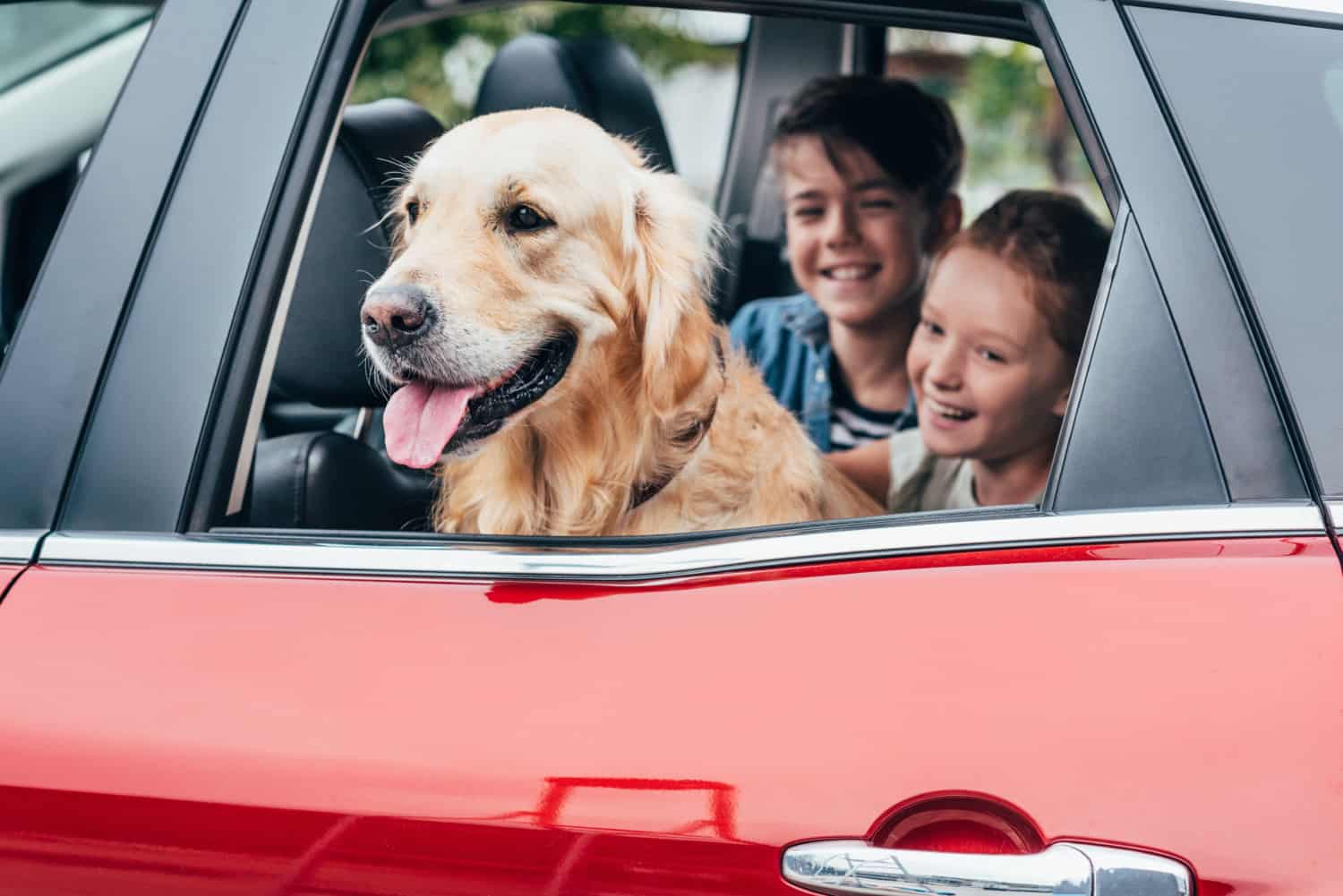
Pet Friendly Hotels In Canada
If you’ll be spending the night in Canada, you’ll also need to find a great pet friendly hotel! Canada has many hotels that welcome pets, and it’s easy to find the perfect accommodations by searching online.

Documents Needed When Traveling With Dogs And Cats To Canada
There is no limit on the number of pets that can travel with you to Canada, as long as they are your personal pets. Before heading to the border with an animal, make sure you understand the Canadian import and travel requirements.
The Canadian Food Inspection Agency sets the policies for traveling with your pets to Canada. Their officers inspect and can refuse entry, confiscate, or detain an animal if:
- it is undeclared, including family pets
- you do not have the necessary permits/certificates
- it is suspected of being sick or infected with a pest or disease
- the animal is transported in a non-humane way and not kept safe from harm and injury
Proof Of Rabies Vaccination
If you’re traveling to Canada from the United States, Mexico, or any other country not considered rabies-free with your cat or dog that is at least three months old, you’ll need a valid rabies vaccination certificate. For cats and dogs younger than three months, proof of age must be provided upon request.
The rabies vaccination certificate must meet these requirements:
- be legibly written in English or French
- have the name and signature of the licensed veterinarian that issued the certificate and the date it was signed
- identify the animal by age, breed, sex, color/markings, weight, and microchip/tattoo number, if applicable
- state that the animal is vaccinated against rabies
- indicate the date of vaccination
- indicate the trade name and the serial number of the licensed vaccine
- specify the duration of immunity (otherwise, it will be considered valid for 1 year from the date of vaccination)
Pets traveling to Canada are not quarantined upon arrival from any country. Additionally, Canada does not require a vaccination waiting period. Pets can travel to Canada immediately after he or she receives the rabies vaccination.
READ MORE ⇒ Planning A Pet Friendly Road Trip
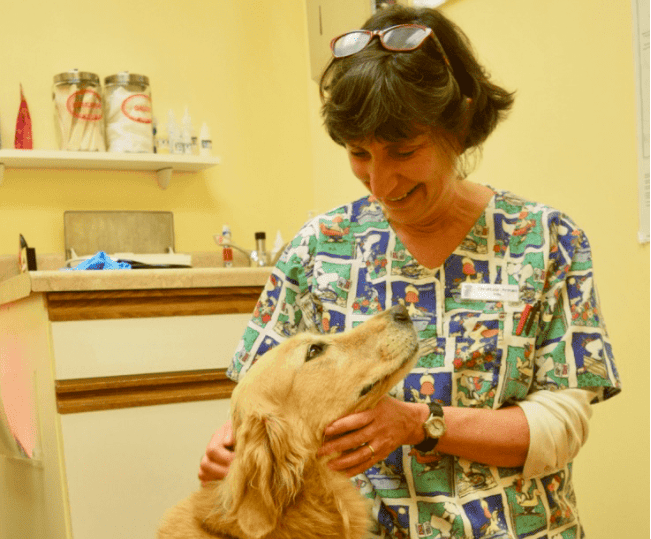
What if you don’t have a valid rabies certificate?
Arriving at the Canadian border without a proper rabies certificate likely means you’ll be jumping through some additional hoops.
First, you’ll have to have your dog vaccinated for rabies within two weeks of your arrival. Then you’ll have to take the vaccination record to a Canadian Food Inspection Agency office.
In addition to the vaccination cost, you’ll incur administrative fees for each animal. These fees are due when you cross the border.

What if your pet can’t be vaccinated for rabies?
If your dog or cat can’t be vaccinated for rabies due to his health, you can apply for an exemption to the rabies certificate requirement. Applications, submitted in writing to the National Centre for Permissions, must include a letter from your veterinarian stating the specific condition preventing the vaccination of your pet. You also have to include the results of a Rabies Neutralising Antibody Titre Test meeting the minimum titre requirements.
Upon approval, your pet will still need an inspection by a CFIA veterinarian when you arrive in Canada. You’re responsible for making arrangements for the inspection at your port of entry before the animal travels.
Health Certificate When Entering Canada
The Canada Border Services Agency inspects all pets traveling to Canada to ensure the animal’s rabies vaccination is current and the animal description matches. The agents also visually inspect the animal to ensure that there are no visible signs of illness or injury.
It is possible for the border agents to refer any animal crossing the border for secondary inspection. But as long as your dog is healthy, this is unlikely to happen.
Generally, health certificates are not necessary when traveling with your pets to Canada. But, if a pet appears to be ill, the border agents can request a health certificate from a veterinarian. Their primary concern is that the pet’s condition is not contagious.
If you’re traveling with a pet with an obvious health condition, we recommend getting a health certificate from their vet prior to your trip. It’s a bit of a hassle, but it could help you avoid a delay border!
Pets flying to Canada must also meet the requirements of the airline on which they’ll be traveling. Most airlines require that all pets have a current health certificate.
READ MORE ⇒ Tips for Traveling to Canada with a Cat

Transport Pets Safely
Canada has strong regulations in place to help protect all animals from injury and suffering during transport. To ensure your pets are safe while traveling, follow these suggestions:
Contain your pet – Buckle up animals that could distract the driver in a seat belt harness or secured carrier. In addition, pets should not roam freely in the back of pick-up trucks, and must not be exposed in any way to flying debris.
Watch the weather – Don’t leave animals in parked vehicles for long periods of time, especially in hot or cold weather. If you must leave your pet unattended in a vehicle for a short period of time, ensure it has fresh water and leave windows open a little on either side of the vehicle to create a cross-breeze.
Provide food, water, and rest – On long trips, make sure your pet has food and water and that you make regular stops so it can rest or get out and walk around.
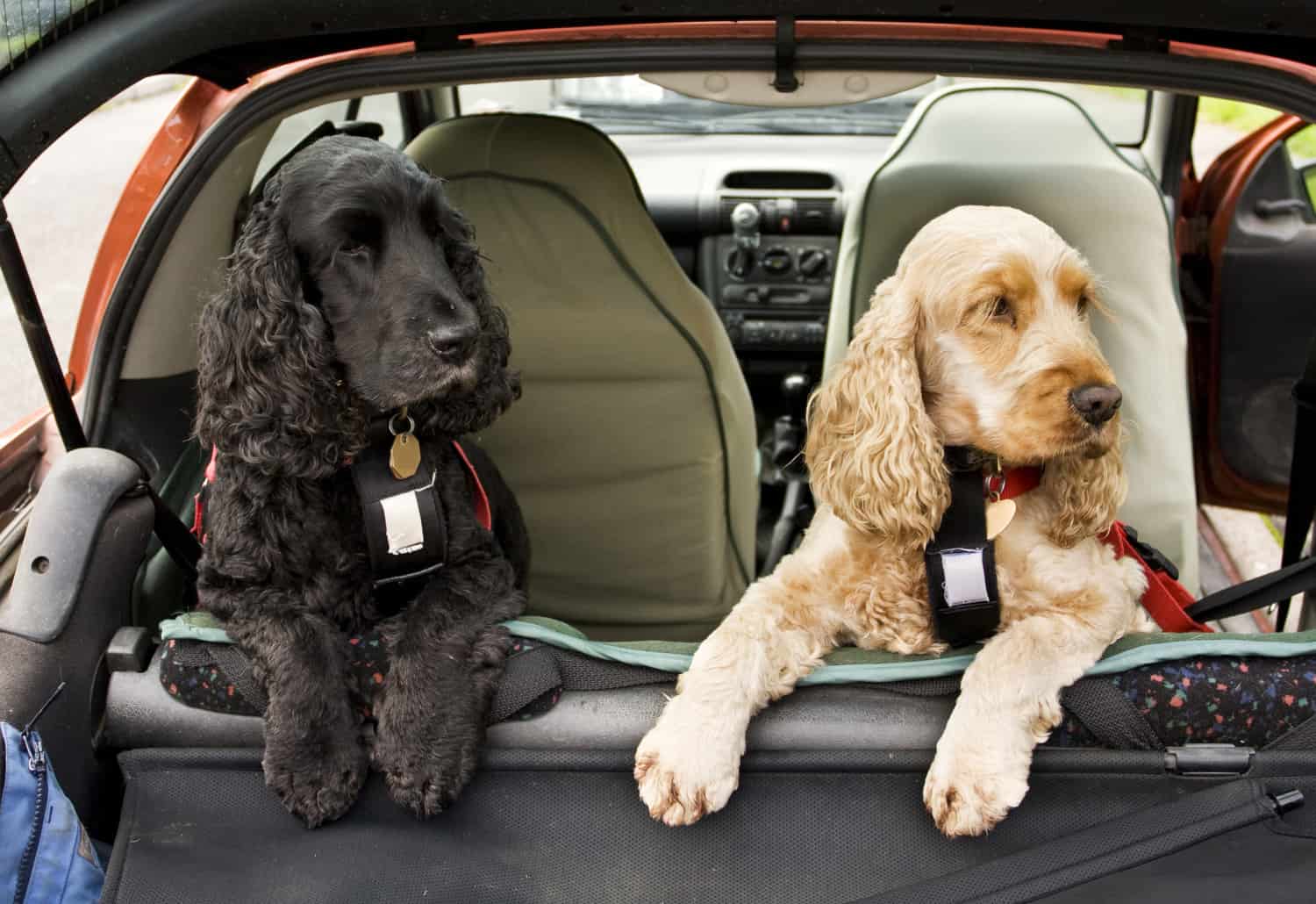
Taking Pet Food And Treats Into Canada
Visitors traveling with pets to Canada from the United States can bring up to 20 kg (44 pounds) of pet food and treats into Canada for their personal use. This is the total amount of pet food and treats allowed, regardless of the number of pets traveling with you. In addition, the pet food and treats must meet ALL of the following requirements:
- Pet food and treats must be from the United States, commercially packaged, and unopened.
- All pet food and treats must be in the possession of the traveler at the time of entry.
- The animal that will eat the products must accompany the traveler at the time of entry.
- Any pet food and treats imported into Canada by the traveler must be fed only to the animal that accompanied the traveler into the country.
For longer trips, or if you’re traveling through Canada to or from Alaska, consider taking a dehydrated pet food with you. We love The Honest Kitchen dog food and it’s great for traveling because a 10 pound box makes 40 pounds of food!
READ MORE ⇒ What To Pack For Your Dog For An Overnight Trip
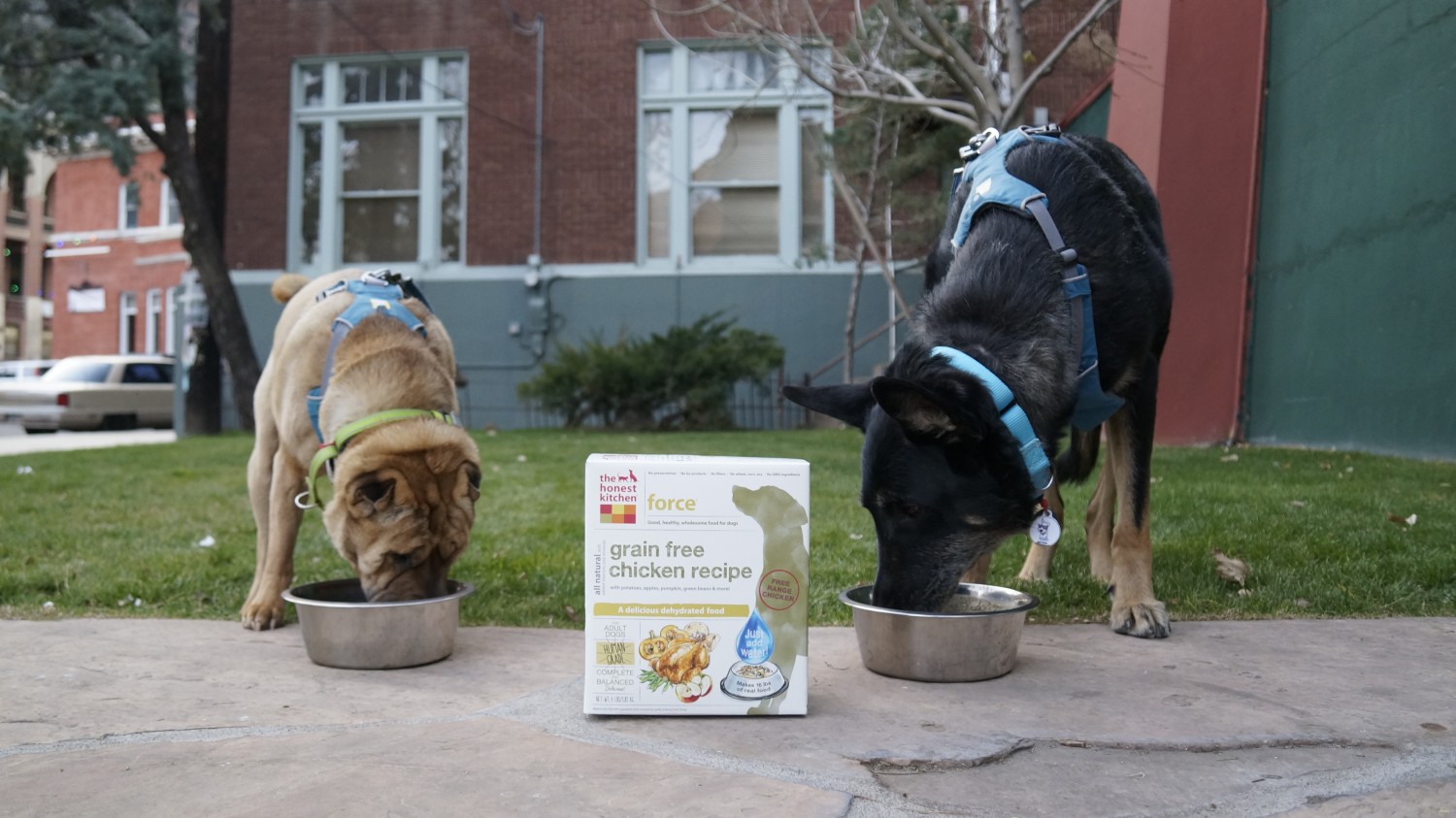
No Requirement For Microchips or Tattoos
Canada does not require a microchip or tattoo identification for pet dogs and cats. However, some type of permanent identification can help your pet get home if they get lost.
Traveling With Other Types Of Pets To Canada
Not everyone travels with cats and dogs. Here are the rules for traveling to Canada with less common pets:
Amphibians and Reptiles
Imports of amphibians and reptiles (other than turtles and tortoises) are controlled by the Convention on International Trade in Endangered Species of Wild Fauna and Flora and/or other restrictions under the Wild Animal and Plant Protection and Regulations of International and Interprovincial Trade Act, which are administered by the Canadian Wildlife Service. If you plan to bring an amphibian or reptile to Canada, you should contact the Canadian Wildlife Service.
Birds
Birds are considered pets for Canadian import purposes if they are personally owned and cared for, and are a species commonly known as caged birds such as psittacines (birds in the parrot family), song birds, toucans, canaries, finches, cardinals, etc.
To travel with your pet bird to Canada, you must meet all of the following requirements:
- Your bird must accompany you or a member of your immediate family.
- The bird must appear healthy when inspected at the port of entry.
- You must sign a declaration stating that:
- the bird was in your possession for the 90 day period preceding the date of importation and wasn’t in contact with any other birds during that time
- the bird is your personal pet and won’t be sold
- You or any member of your family must not have imported birds into Canada under the pet bird provision in the past 90 days.
In cases of a disease outbreak, an Export Veterinary Certificate from the United States might be required. Check the Canadian Food Inspection Agency for more information.
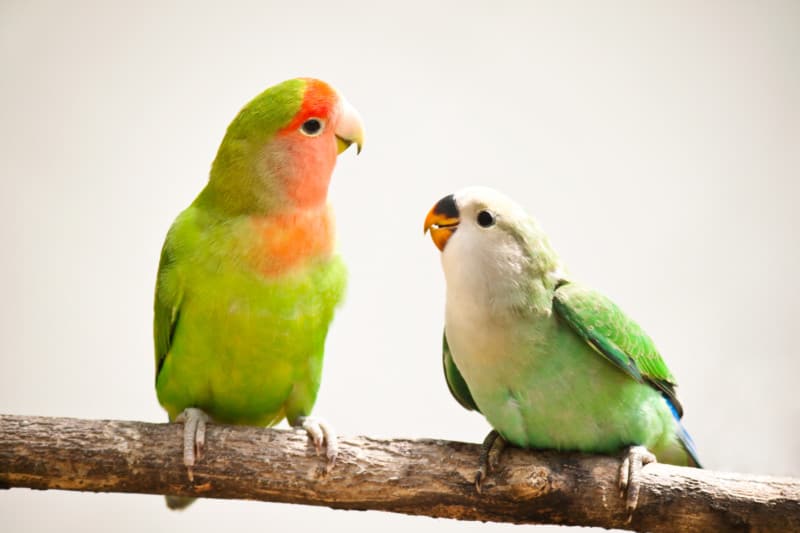
Ferrets
Ferrets can only travel to Canada from the United States. They can cross the border without an import permit if they have a valid rabies vaccination certificate. The ferret must have received the rabies vaccination in the 12-month period preceding the date of import. Ferrets less than 3 months old are not subject to any import restrictions.
Rabbits
Pet rabbits from the United States do not require an import permit or health certificate to enter Canada. When you arrive at the border, present your rabbit to Canada Border Services Agency staff for inspection. Also provide proof that the rabbit has lived in the United States for the 60 days prior to entering Canada.
Rodents
Most pet rodents, including chinchillas, guinea pigs, hamsters, mice, and rats can travel to Canada without an import permit or health certificate. Border agents may inspection your pets related to the humane transport of animals regulations.
There are import restrictions for certain (or specific) pet rodents, including prairie dogs, gambian pouch rats, or squirrels from most countries; and all rodents from Africa.

Turtles and Tortoises
Turtles and tortoises arriving from all countries require an import permit. And the animals must have been in your personal possession in the country of origin and accompany you to Canada. You should submit the application for permit to import at least 30 days before your arrival.
Breed Specific Legislation In Canada
If your Canadian road trip will take you to or through the Province of Ontario, and you’re the owner of a bully breed, please read this information carefully. You might need to change your route.
Province of Ontario
Ontario has an ugly Breed Specific Law that bans “pitbull-type” dogs from the province. Police and animal control officers can search for and seize any dog deemed to be a “pit bull-type” based on visual inspection.
If the authorities determine the dog is a “pit bull-type,” the dog is euthanized, even if it didn’t break any other law. Here is a summary of the law from Ontario’s Ministry of the Attorney General.
READ MORE ⇒ Tips for Traveling with Pit Bulls

There are no exceptions to this law for tourists traveling with their pets. So, if you have a pit bull, please avoid Ontario. And if you have a dog that could be mistaken for a pit bull, carry documents proving your dog’s pedigree when traveling in Ontario.
Throughout the rest of Canada, there are municipalities with breed restrictions and bans. Plan to avoid them. Visit the Justice for Bullies website for a map of locations with breed specific laws.
Pet Friendly Destination Ideas In Canada
Canada has some gorgeous pet friendly vacation destinations to consider. Here are a few of our favorites!
The Complete Pet Friendly Guide To Jasper National Park
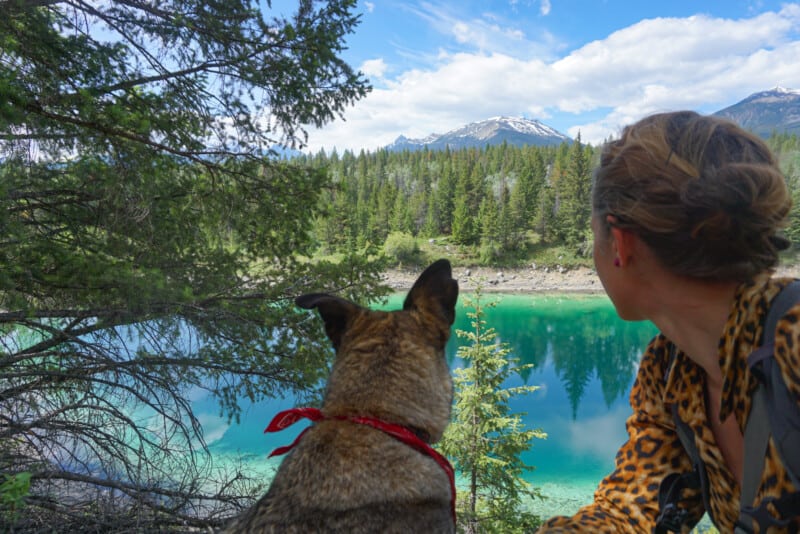
Dog Friendly Hike at Lake Louise
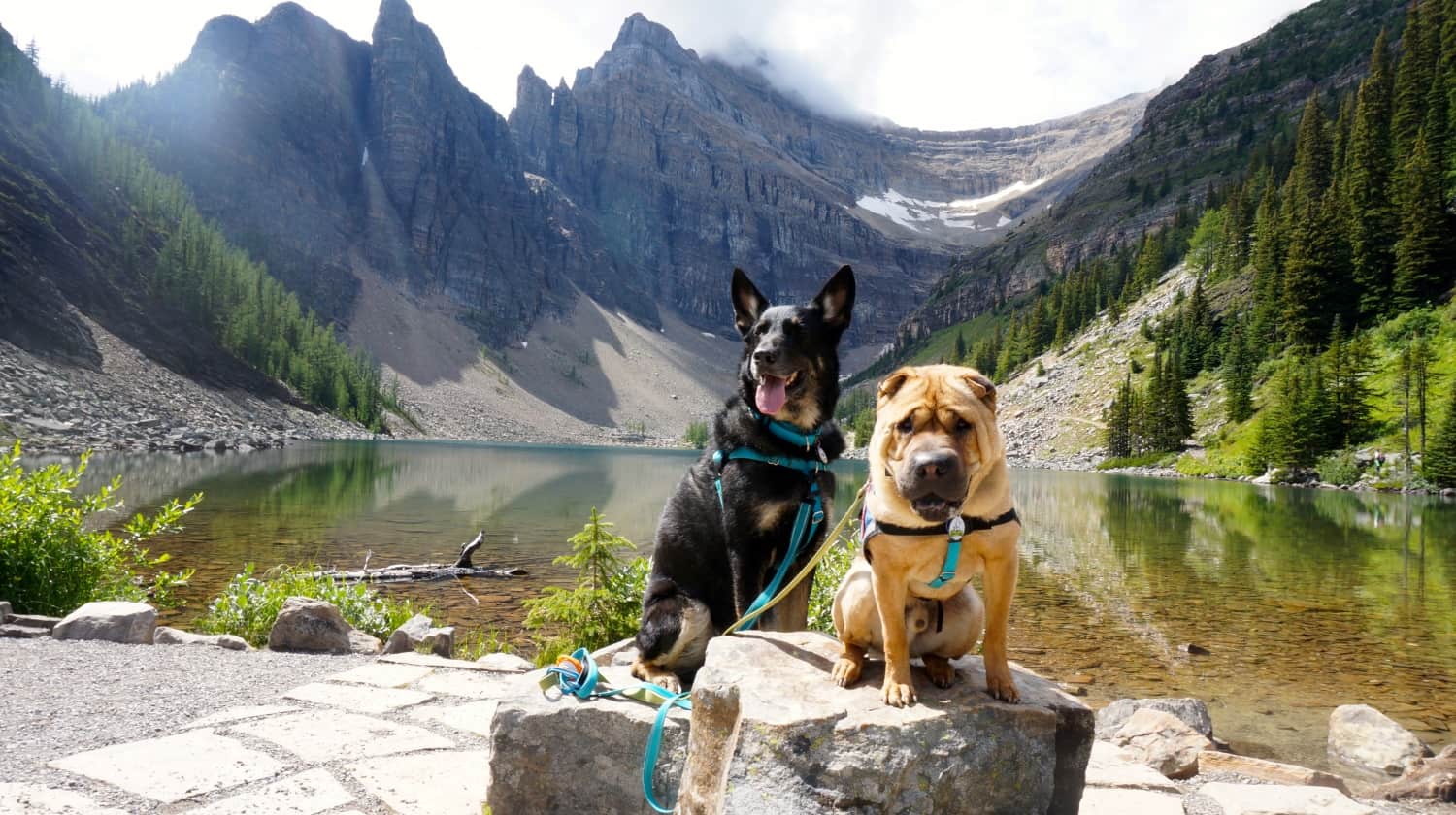
A Pet Friendly Guide To Banff National Park
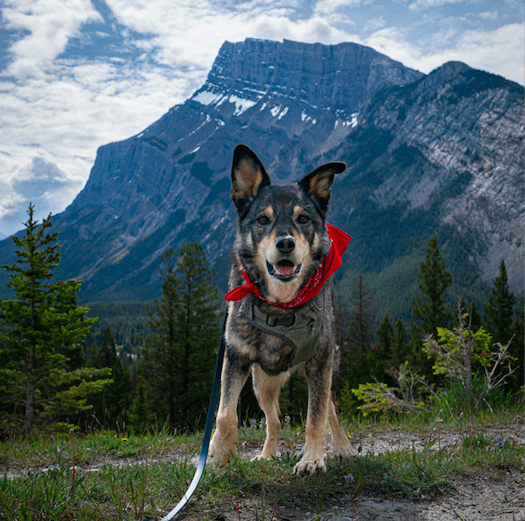
Dog Friendly Road Trip In British Columbia: Vancouver To Kamloops And Back

Vancouver’s Top 5 Dog Friendly Things To Do

Documents Needed When Returning To The United States With Pets
Rabies Certificates Not Required For Cats And Dogs Traveling From Canada To The United States
All pets must appear healthy to enter the United States. Cats, regardless of where they’re arriving from, don’t need proof of rabies vaccination to enter the United States. Things are more complicated for dogs.
After October 14, 2021, dogs coming from counties considered high-risk for importing rabies must have CDC Dog Import Permits and can only enter the country at approved ports of entry.
Luckily, Canada isn’t a high-risk country on the CDC website. So, dogs traveling from Canada to the United States don’t need to present a rabies vaccination certificate or other paperwork. Still, the CDC recommends all dogs receive a rabies vaccination.
Also keep in mind that some states require vaccination of cats and dogs for rabies. So it is a good idea to check with state and local health authorities at your final destination.
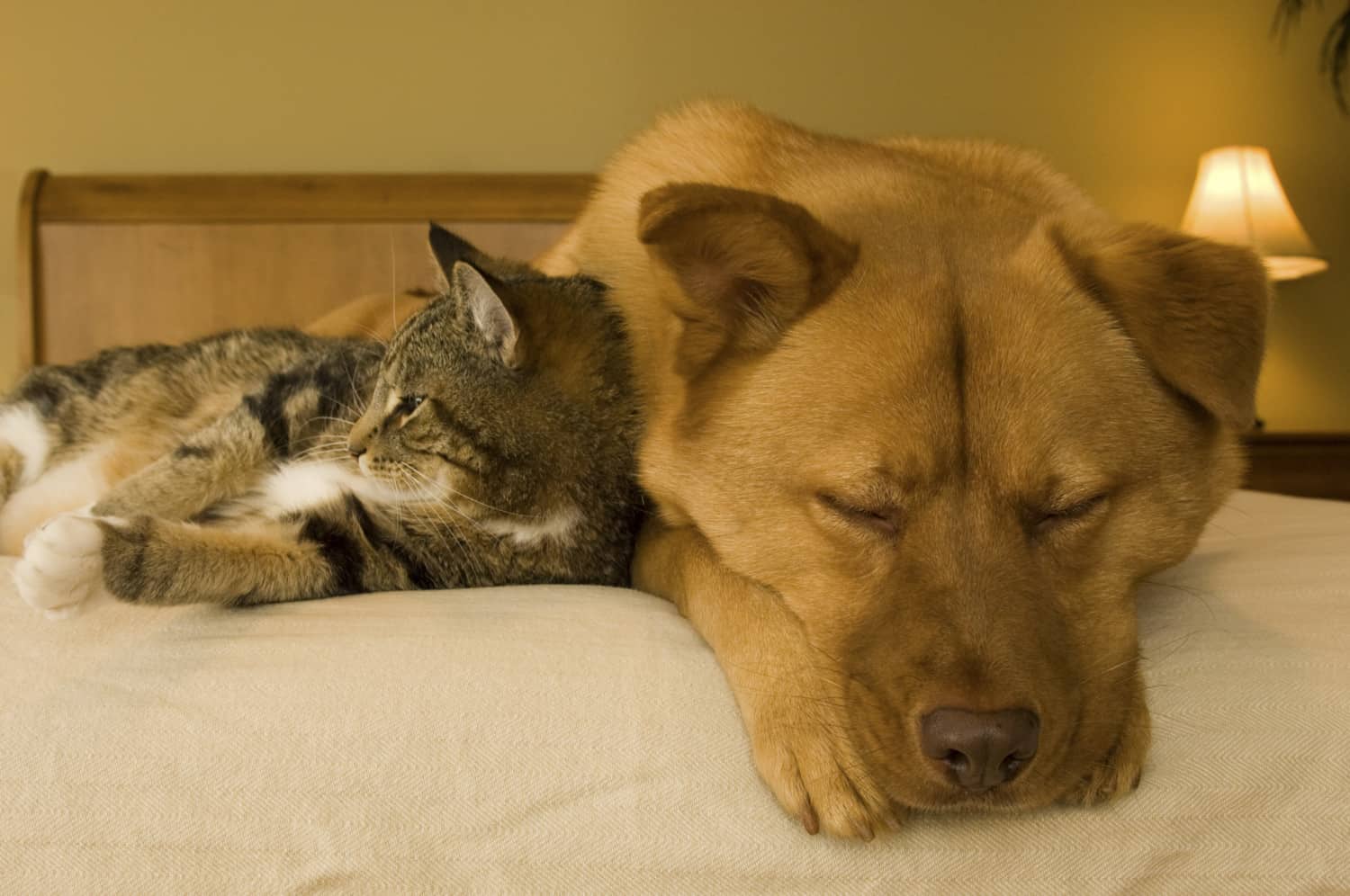
Health Certificate When Entering the United States
Like in Canada, if your pet is healthy he won’t need a health certificate to come into the U.S. However, if there could be any question about your pet’s health, we recommend getting a health certificate from a veterinarian that states his condition is not contagious.
READ MORE ⇒ What You Should Know About Emergency Vets Before You Need One
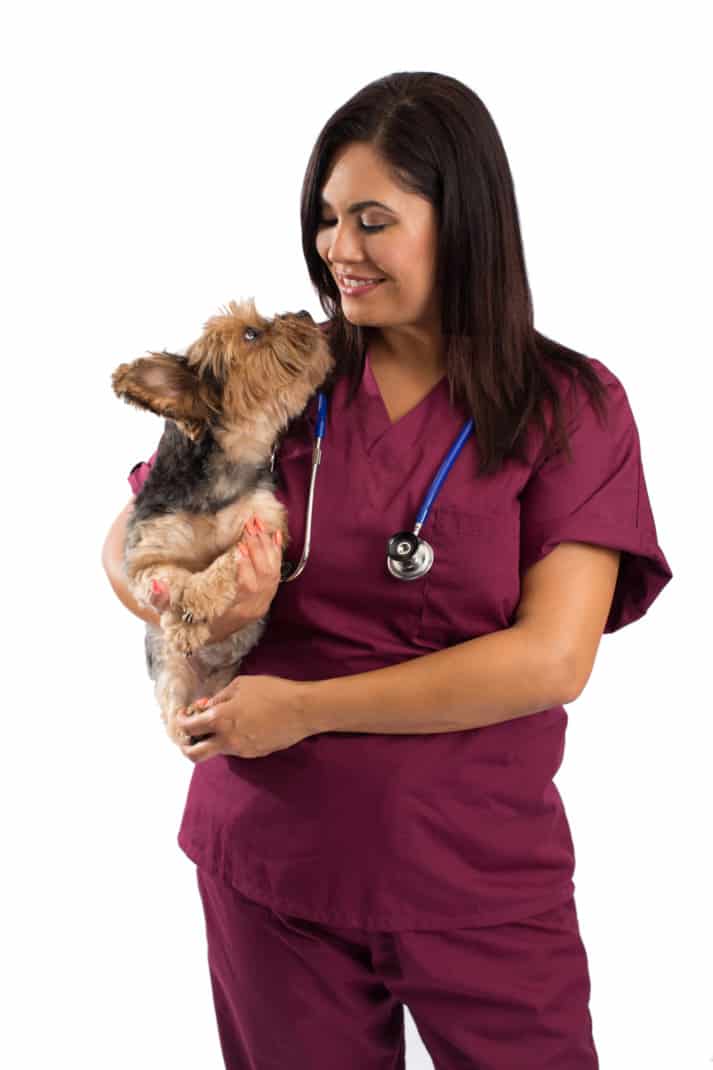
Taking Pet Food And Treats Into The United States
When driving from Canada to the United States, you can bring up to 50 pounds of pet food purchased in Canada. The food must meet the following requirements:
- Does not contain lamb, sheep, or goat meat
- Shelf-stable (not needing refrigeration) and sealed (never opened) containers of pet food must in commercial packaging
- Labels on the packaging must clearly list the ingredients and country of origin
- Manufactured in Canada or the United States only
Pet foods containing sun-dried, freeze-dried, or raw products cannot be imported for personal use.
In Real Life
The requirements are pretty straight forward. But if you’re still losing sleep, here’s what it’s really like to cross the border with your pets.

We hope this summary makes it easier for your to plan your pet friendly trip Canada! For more ideas on places to visit, be sure to check our pet friendly destination guides.
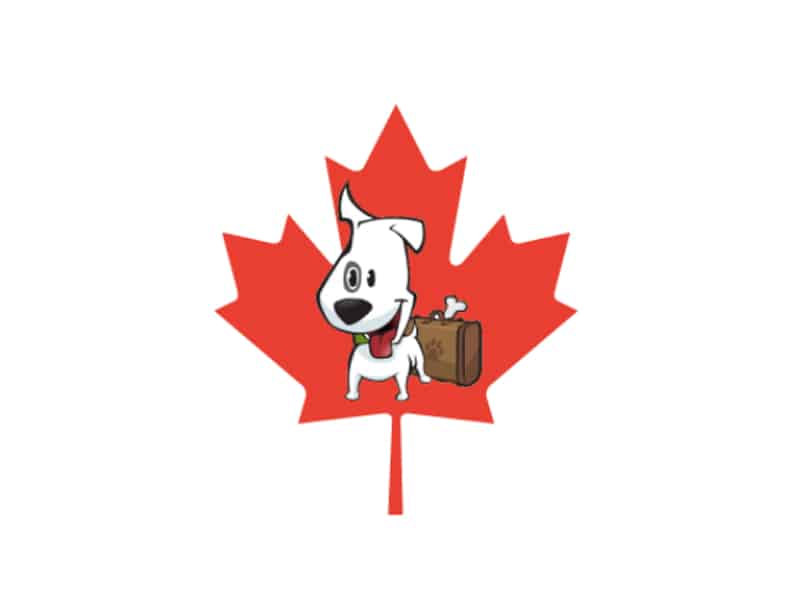
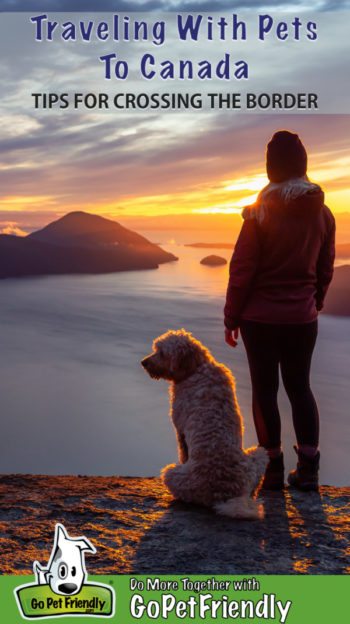
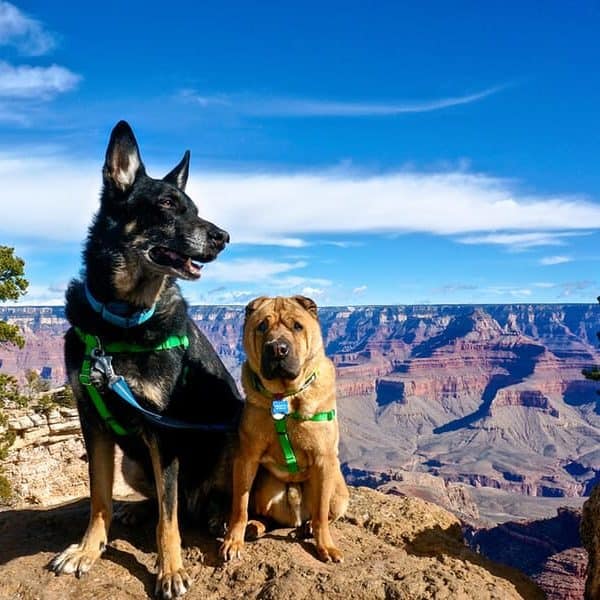

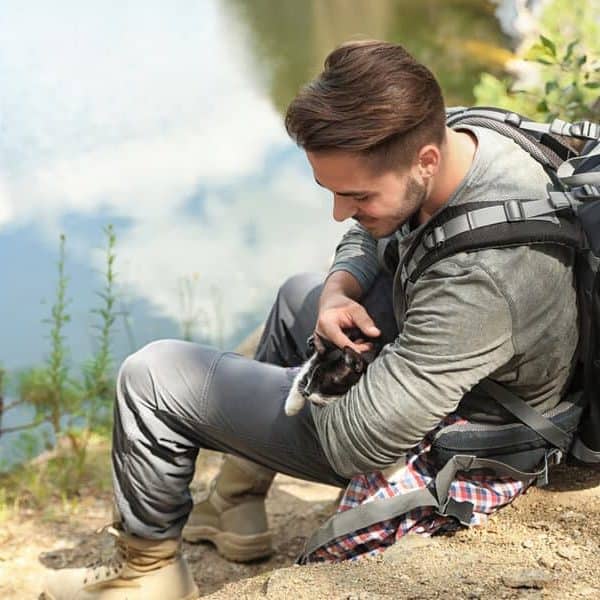

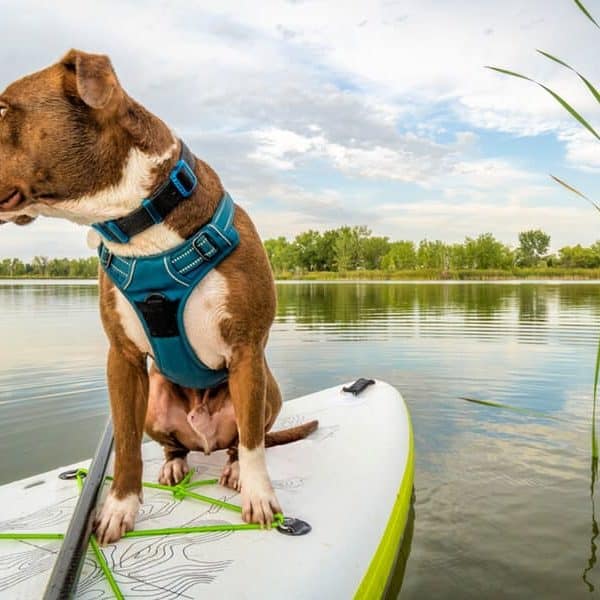





Hi. I am travelling with my golden retriever for the 1st time to Canada. I read in one of your blogs that dog food containing lamb is not permissible when returning to USA. My dog has food allergies, and his food contains lamb. can you share some more information on that. Thanks
Hi Bhagyashree, and thanks for your note! First, it’s very unlikely that your dog’s food will be checked by the border agents. That being said, it’s always better to be prepared. So I’d recommend buying the smallest package needed to feed your dog while you’re traveling. Leave the package closed for when you cross the border into Canada and open it once you’ve arrived. Hopefully your dog eats most of the package during your visit. If there is any left, and you’re checked by the US border agents when you return, any pet food or treats that are in an opened bag or container will have to be disposed of. I hope that helps and that you have a fantastic trip!
Thank you Amy for your guidance. Will keep that in mind. Thanks again.
Our 6th old pup will have his rabies shot on aug 21 and we will be leaving for our circle tour on sept 10 th is this enough time to enter Canada
Hi Sandy, and thanks for your note. Canada does not require a vaccination waiting period, so your pup can travel to Canada immediately after he or she receives the rabies vaccination. I hope that helps and that you all have a great trip!
Hi! What about state-specific requirements when driving back over the US border? NY State, for example, says they require a health certificate when “importing” an animal… is that what it counts as even after just a week’s vacation?
Hi Philip! Yes, some states have additional rules and how they define “importing” is different from state to state. For more information, you could call the State of New York’s offices. However, in 12 years of traveling full-time, we were never checked by a state authority when traveling from Canada into the United States or from state to state. Only the federal border agents checked our documents. I hope that helps and that you have a great trip!